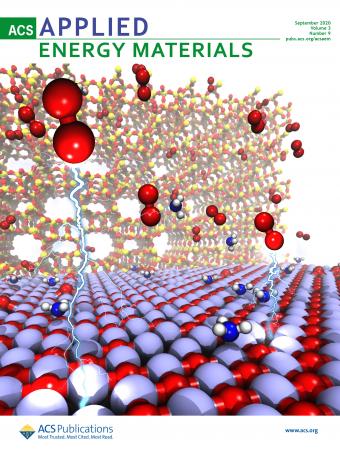Microporous crystals could provide regenerable, reversible storage environment for ammonia transport
Mines-led proof-of-concept work published on the cover of September 2020 issue of ACS Applied Energy Materials

A team of Mines researchers recently had their work on ammonia storage via adsorption in microporous crystals such as zeolite published on the cover of the journal ACS Applied Energy Materials.
In the paper, “Vacancy Healing as a Desorption Tool: Oxygen Triggered Removal of Stored Ammonia from NiO1–x/MOR Validated by Experiments and Simulations,” the Mines-led team showed that ammonia can be removed by internal heat produced during a looped process, providing a regenerable and reversible binding environment for storage.
“This proof-of-concept work could provide a useful starting point for the design of future materials for reversible gas storage,” said chemical and biological engineering PhD candidate James M. Crawford, the lead author on the paper.
“Ammonia has wide global uses ranging from fertilizer to fuel. But as a toxic gas, safe and affordable transport of ammonia remains a significant challenge,” said Crawford, who is advised by Chemical and Biological Engineering Professor Moises Carreon. “Solid-state materials with high internal capacities have been proposed to store ammonia near the condensation point. One barrier to the adoption of these technologies is irreversible binding and poor recyclability of the material.”
Co-authors on the paper were Professor Carreon; chemical and biological engineering PhD students Ryther Anderson and Ryan Gasvoda; applied chemistry PhD student Nolan Kovach; chemical engineering undergraduate Courtney S. Smoljan; Chemistry Associate Professor Brian Trewyn; Chemical and Biological Engineering Professor Sumit Agarwal and Assistant Professor Diego Gómez-Gualdrón; and Jacek B. Jasinski of the University of Louisville.
To read the full paper, go to https://pubs.acs.org/doi/full/10.1021/acsaem.0c00634. Funding for the research came from the National Science Foundation.




